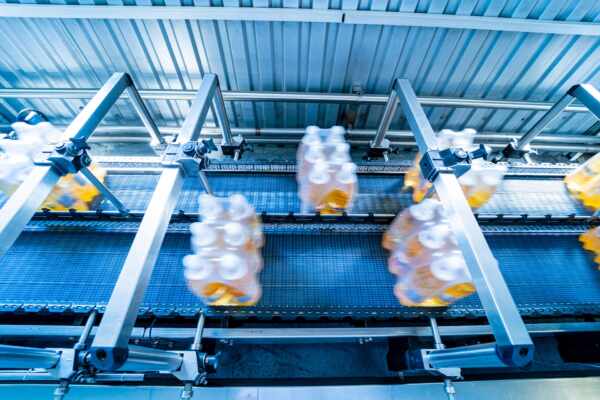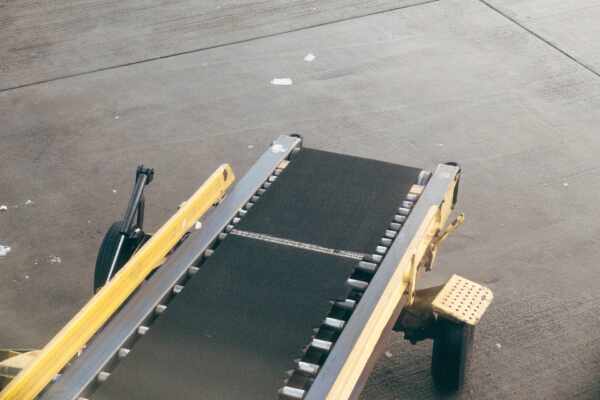A conveyor belt system is a vital component of food manufacturing operations, facilitating smooth product flow and optimising efficiency. As a result, conveyor belt maintenance is crucial for safeguarding the ongoing performance and longevity of your system while complying with food safety standards. However, knowing how to maintain your conveyor belt system effectively and identifying areas that require attention can be challenging, especially with food manufacturing operations balancing various priorities.
In this article, we will provide essential conveyor belt maintenance tips for food manufacturing operations, equipping you with expert insights and strategies that help boost efficiency, prolong the life of your conveyor belt system, and ensure food safety compliance. Learn about the importance of regular inspections, cleaning and sanitation procedures, addressing wear and damage promptly, and monitoring system performance for continuous improvement. By adopting best practices in conveyor belt maintenance, you can ensure the ongoing success of your food manufacturing operation and mitigate the risk of costly downtime, product recalls, and reputation damage.
The Importance of Regular Inspections
Conducting routine inspections is a vital aspect of conveyor belt maintenance for food manufacturing operations. Regular inspections enable early detection of potential issues, reducing the risk of system malfunction, costly downtime, or food safety violations. Consider the following recommendations for effective inspections:
1. Inspection Frequency: Determine a suitable inspection frequency based on the operational demands of your conveyor belt system. Factors to consider include the scale of production, the types of products, and any specific food safety requirements.
2. Inspection Checklists: Develop a comprehensive inspection checklist that covers all essential components of your conveyor belt system, including belts, pulleys, rollers, drives, and support structures. This will ensure a thorough and consistent approach to assessments.
3. Documentation: Keep detailed records of inspection findings, maintenance activities, and any corrective actions taken. Proper documentation helps track your conveyor belt system’s performance and assists with regulatory compliance and auditing processes.
Cleaning and Sanitation Procedures
Maintaining a hygienic conveyor belt system is critical for food manufacturing operations, ensuring compliance with food safety standards and minimising the risk of bacterial growth and cross-contamination. Implement the following cleaning and sanitation procedures:
1. Frequency and Scheduling: Establish a cleaning and sanitation schedule based on your food manufacturing operation’s specific needs, accounting for product types, production volumes, and regulatory requirements.
2. Cleaning Techniques and Methods: Utilise appropriate cleaning techniques for your conveyor belt system, such as wet or dry cleaning, manual or automated processes, or specialised equipment to facilitate deep cleaning of hard-to-reach areas.
3. Sanitising Agents: Select sanitising agents that are compatible with your conveyor belt system materials and meet food safety requirements. Ensure that the agents effectively eliminate potential pathogens without causing damage to the components or leaving residue on the products.
4. Verification and Validation: Implement a verification process to ensure the cleaning and sanitation procedures have been effectively executed. This may include visual inspections, swab testing, or other methods to confirm that hygiene standards have been met.
Addressing Wear and Damage Promptly
Timely identification and repair of wear and damage within your conveyor belt system can prevent minor issues from escalating into more severe problems. Keep an eye out for the following signs of potential issues:
1. Belt Condition: Monitor the belt for signs of wear or damage, such as fraying, cracking, or splits. Pay special attention to the splice area, as poor splicing can lead to premature belt failure.
2. Component Wear: Inspect rollers, pulleys, drives, and support structures for signs of wear, corrosion, or damage. Damaged or worn components can cause a cascade effect on the entire conveyor belt system, leading to further issues if left unaddressed.
3. Misalignment and Tracking: Check for any signs of misalignment or tracking issues that can negatively impact the efficiency of your conveyor belt system. Implement corrective measures promptly to avoid excessive wear or damage to belts and components.
4. Noises and Vibrations: Listen for unusual noises or vibrations, which can indicate issues with components, drives, or misalignments. Investigate the source of any abnormalities and address them as needed.
Monitoring System Performance for Continuous Improvement
Implementing a process for monitoring the performance of your conveyor belt system allows for continuous improvement, identifying opportunities to further enhance efficiency, safety, and reliability:
1. Key Performance Indicators: Establish key performance indicators (KPIs) for your conveyor belt system, such as throughput, downtime, maintenance costs, or food safety incidents. Regularly review and evaluate your KPIs to drive improvements.
2. Benchmarking: Compare your current conveyor belt system performance with industry standards and best practices, identifying areas in which your operation can improve.
3. Technology Integration: Explore the use of technology, such as IoT devices or sensors, to monitor system performance, collect data, and identify trends or potential issues.
4. Employee Engagement: Encourage employees to contribute ideas and suggestions for improvements, fostering a culture of continuous learning and development within your food manufacturing operation.
Conclusion
Effective conveyor belt system maintenance is crucial to the long-term success of food manufacturing operations, ensuring food safety compliance, optimal efficiency, and reduced downtime. By adopting best practices in regular inspections, cleaning and sanitation procedures, addressing wear and damage promptly, and monitoring system performance for continuous improvement, you can safeguard your food manufacturing operation’s performance and reputation in a competitive market.
Rely on the expertise of Change Parts Pty Ltd to support your food manufacturing operation’s conveyor belts maintenance needs. Our dedicated team provides tailored services and insights to help you achieve and maintain optimal efficiency, safety, and reliability.




